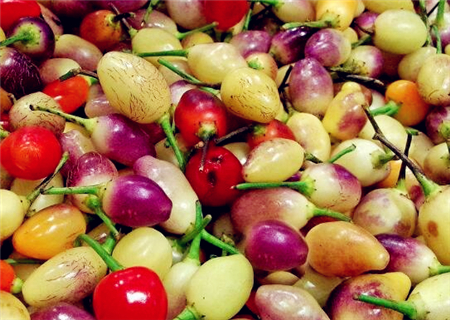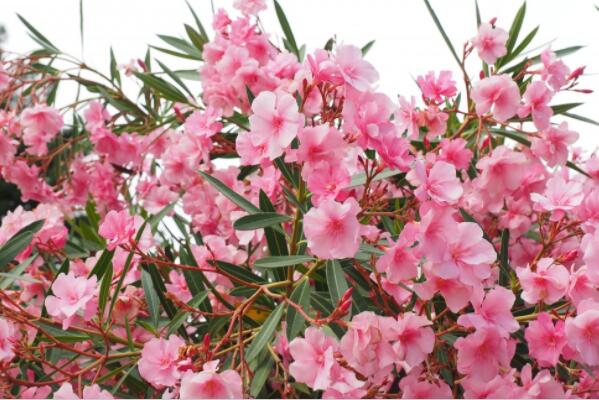What are the edible varieties of roses at present? What's the market price? How much is the seedling? What are the planting techniques?
Edible rose is a deciduous upright shrub native to China. At present, it is widely cultivated not only in China, but also in North Korea, Europe and the United States. What are the edible varieties of roses at present? What's the market price? How much is the seedling? What are the planting techniques? It is learned from the rose planting base in Yunnan that the price of the current year's seedlings with nutrition cups is about 2.5 30cm 3.5 yuan. The height, age and packaging of the seedlings are different, and the prices are different.

What are the edible varieties of roses at present?
1. Double rose: traditional rose. The plant shape is erect and open, about 2 meters high; flowers solitary or several fascicled, fragrant, light purple, compound 4 Mel 5 layers. The flower diameter is about 8 cm and the florescence is from early May to early June. It is a variety cultivated by the masses, but the resistance of the plant is poor and it is easy to get rust.
2. Purple rose: also known as four Seasons Rose. It is made by crossing botanical roses with Rosa przewalskii. The plant shape is erect and open, with a height of nearly 2 meters and a cluster width of 1 Mel 1.2 meters; flowers solitary, compound, light purple, flowers large, about 5-9 cm in diameter. The initial flowering period is at the end of April, the full flowering period is from early May to mid-June, and then it continues to bloom until mid-October. The plant has strong resistance to rust and high yield.
3. Pingyin No.1: the plant shape opens upright. The plant is about 1 Mel 1.2 meters high, and the flowers are solitary or clustered at the top of the branches of the current year. The flowers are double, light purple, leafy, and about 8 cm in diameter. The first flowering period is from the end of April to the first ten days of June, and then it will continue to bloom until October. The plant has strong resistance and high yield, and the fresh weight yield can reach 400 won 500 kg / mu, which has strong fruiting ability. The natural bud drop rate is less than 5% Mui 8%), which is an excellent variety to be popularized in a large area.
4. Pingyin No. 3: the plant shape is compact and the flower has compound petals. The flowers are about 8 cm in diameter and light purple in color. The flowering period is from the end of April to the end of May, and the yield is high.
Other varieties include Bulgarian rose, Soviet perfume 1Mel No. 4, bitter rose, flowering rose and Beijing White Rose.
What is the current market price of edible roses?
At present, the price of fresh flowers ranges from a few yuan to more than ten yuan, and in the practical rose market, whether it is flower cake products or edible roses, the barriers to entry are very low, so after attracting a large number of businessmen, it will cause uneven market conditions, but also easy to cause vicious competition. In the long run, it is necessary to establish a long-term mechanism to optimize the whole chain of planting, acquisition, processing and sales.
What are the edible rose planting techniques at present?
1. Site selection for garden construction: mountain areas should make full use of Weir and soil slope, which can not only increase economic benefits, but also consolidate soil and protect Weir and prevent soil erosion. A special rose garden should be built on the plain. However, no matter in the mountains or plains, do not plant on the sticky and heavy waterlogged land.
2. Soil treatment: soil disinfection is carried out before planting, mainly by steam disinfection, and can be fumigated with chloropicrin unconditionally. After chloropicrin fumigation, it should be turned deeply for many times to avoid drug damage affecting the development of plant roots. Then apply farm manure to ploughing. The plain land is formed into a high border with a width of 200 cm and a height of 15 mi 20 cm.
3. Planting: the planting row spacing is 2mi 2.5 m. The plant spacing is 1mi 1.5 m, and the plant row spacing can be increased appropriately in the plain. Dig the planting pit (60 cm in length, width and depth), put it into the seedlings, fill the soil firmly and water it.
4. Fertilization: fertilization can be carried out in two stages. Once in late autumn, combined with deep ploughing, 3000m / mu of farm manure was applied; the other time, after flowering, 25kg of diammonium phosphate or other compound fertilizer was applied in combination with loosening the soil.
5. Pruning: roses have strong sprouting ability. If they are not pruned in time, the branches will grow thin and withered because of the closeness of the plants. Pruning should be carried out according to plant age, growth status, fertilizer and water and management conditions, and the principle of thinning mainly and cutting short should be adopted, so that the old branches are not old, many branches are not dense, ventilated and transparent. The old branches of more than 5 years should be thinned in time to support the growth of new branches. For roses whose growth is weak and basically lose their ability to bloom, they can be re-pruned to promote the growth of new branches.
6. pest control: the main diseases of roses are rust, powdery mildew and brown spot. The prevention and control of rust can remove the disease buds and bury them deeply. Before and during the onset of rust, powdery mildew and brown spot, trimethoprim, trimethoprim or chlorothalonil were sprayed once a month, which had a good effect on preventing the spread of the disease. The main pests of roses are beetles, big bag moth, red spiders, aphids, scale insects, longicorn beetles and so on. Beetles and pouch moths mainly harm the young shoots and leaves of roses, which can be sprayed with phoxim and killed during the occurrence period; red spiders, aphids and scale insects mainly feed on rose juice, causing growth weakness, and can be controlled by spraying internal insecticides such as dimethoate and monocrotophos; longicorn beetles are destructive pests, so their adults should be killed and the nectar plants that absorb nutrients should be eliminated to inhibit their occurrence.
7. Harvest: the harvest time of roses is different, and there is a great difference in yield and quality. Usually the rose bud should be harvested before opening, that is, the harvest is best when the longitudinal diameter of the bud is 3 times of the calyx, the yield decreases prematurely, and the late blooming affects the quality. In the middle of flowering period, strong and full buds are selected, petals are picked after other weak buds are fully opened, and petals are also picked when flowers are sporadically blooming at other times.
Time: 2019-03-19 Click:
- Prev

How much is the price of colorful peppers per jin? How long will you live? Where is the best place to plant? (with planting method)
Colorful pepper, also known as colorful pepper, is a variety of pepper. Solanaceae pepper is a perennial herb, but it is often cultivated annually. So how much is the price of colorful peppers per jin? How long will you live? Where is the best place to plant? Now the planting methods are arranged as follows: according to Alibaba's latest price
- Next

How much is the price of shrub oleander seedlings? Is it poisonous? When will it blossom? How to plant and maintain?
Oleander, also known as safflower oleander, willow leaf peach, peach, call winter, willow leaf, peach plum, goji, is an evergreen upright shrub, up to 5 meters high, cultivated in various provinces and regions of China, especially in southern China. So how much is the price of oleander seedlings? Is it poisonous? When will it blossom? How to plant and maintain
Related
- Fuxing push coffee new agricultural production and marketing class: lack of small-scale processing plants
- Jujube rice field leisure farm deep ploughing Yilan for five years to create a space for organic food and play
- Nongyu Farm-A trial of organic papaya for brave women with advanced technology
- Four points for attention in the prevention and control of diseases and insect pests of edible fungi
- How to add nutrient solution to Edible Fungi
- Is there any good way to control edible fungus mites?
- Open Inoculation Technology of Edible Fungi
- Is there any clever way to use fertilizer for edible fungus in winter?
- What agents are used to kill the pathogens of edible fungi in the mushroom shed?
- Rapid drying of Edible Fungi

